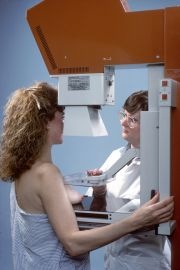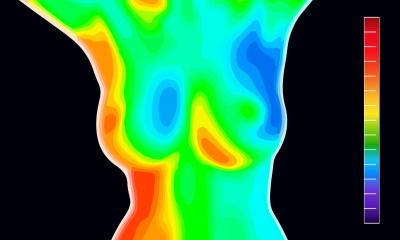Is mammography enough for all women?
While in Europe experts still discuss whether mammography screening is the ideal tool to save women from breast cancer, the Wall Street Journal investigated if mammography is really enough. Physicians claim that women with higher risk to develop breast carcinoma should receive MRI or ultrasound.

For many years experts could not agree on mammography screening: Which women will benefit from the examination? Could it have negative psychological impacts - for instance if possibly malignant masses are detected which nevertheless don’t develop into tumors? Eventually, most governments started screening programmes for women older than 40 or 50 years. Today, however, opinion seems to be changing as many physicians demand more sensitive tests such as magnetic resonance imaging (MRI) for at least the women with higher genetic risk or other factors that signal concern that breast cancer might be developed, the Wall Street Journal (WSJ) reported on 24 June 2008.
According to the WSJ the increased demand for further screenings is linked to new guidelines issued by the American Cancer Society last year. The organisation recommended annual MRIs in addition to mammograms for women with certain genetic mutations tied to breast cancer and those whose family history signaled a significantly elevated lifetime danger of the disease,among other high-risk categories. The guidelines were the result of a series of studies that showed that MRI could detect cancer missed by mammography. An investigation published 2004 in the New England Journal of Medicine found that a combination of mammography, MRI and physical exams showed the highest sensitivity in terms of tumor detection. The downside of MRI, however, and even more of ultrasound are also known: They can produce many false positive results and therefore cause unnecessary anxiety
for the patients, says the Journal.
Jerry Gehl, medical director of St. Vincent Breast Center in Little Rock said that he began to recommend MRIs routinely to high-risk patients, as well as mammography, after the ACS guidelines had been released. In general, however, he does not recommend an MRI to patients who only have a somewhat-elevated risk of breast cancer. "You have to draw that line somewhere," Gehl said.
According to the WSJ, medical practitioners are divided about the use of ultrasounds in breast cancer screening. Wendie Berg, a radiologist at a clinic in Lutherville, highlighted the use of ultrasound as a supplement to mammograms in the Journal of the American Medical Assiociation. The study, conducted by American College of Radiology researchers, looked at women at a somewhat-elevated level of risk. It found that in 40 women diagnosed with breast cancer, mammography raised red flags for 20, while mammography plus ultrasound detected 31. In the Wall Street Journal Berg said she recommends ultrasound screenings to some women who do not have evidence of very high risk that would necessitate an MRI. "It is a judgment call," Berg said, adding, "the denser the breast, the more difficult the mammogram is to read, the more likely I am to recommend an ultrasound." However, Constance Lehman, a University of Washington researcher who led the NEJM study, said she never advises ultrasounds for patients. "We find it ineffective as a screening tool. It's not even in the same ballpark" as an MRI, Lehman said. (Wilde Mathews, Wall Street Journal, 6/24).
02.07.2008











